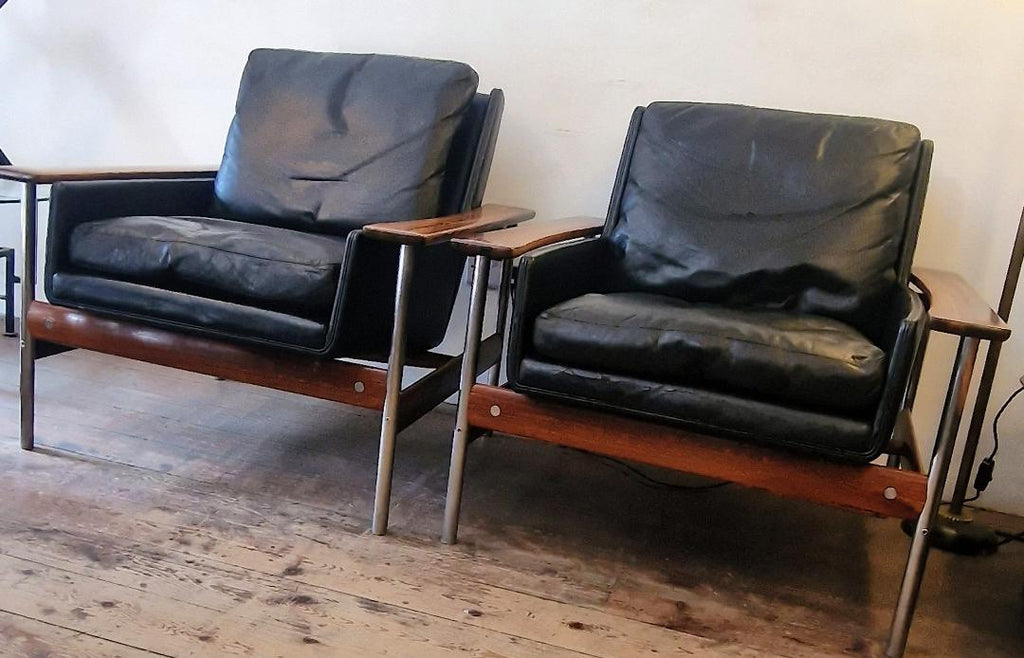Rare armchairs by Norwegian designer Sven Ivar Dysthe

We manage to source these wonderful stunning pair of armchairs
on our last buying trip.
Sven Ivar Dysthe: The Designer Who Brought Norwegian Modernism to the World
If you’ve ever admired the clean lines of Scandinavian furniture—or even spotted sleek Norwegian chairs on Mad Men—there’s a good chance you’ve encountered the work of Sven Ivar Dysthe. Born in Oslo in 1931, Dysthe became one of Norway’s most important furniture designers, blending timeless beauty with everyday functionality.
A Different Path
Unlike most Norwegian designers of his time, Dysthe studied abroad. He graduated in 1954 from the Royal College of Art in London, one of the most prestigious design schools in the world. After working in Copenhagen with Danish design legends, he returned to Oslo and created his first hit: the Model 316 Dining Chair, made of teak, beech, and woven seagrass.
Love and Design Partnership
In the late 1950s, Dysthe met Trinelise Hauan, a fellow designer who had studied under Finn Juhl. The two married, set up a studio together, and in 1959 created what would become a modern classic: the 1001 Armchair for Dokka Møbler. With its mix of steel and rosewood, it was elegant, modern, and built to last. The chair was so iconic that it later appeared in the hit TV show Mad Men, cementing its place in popular culture.
Innovation in the 1960s
Never one to stand still, Dysthe began experimenting with plastics and laminates in the 1960s. He designed the futuristic Globus Chair in 1963 and, a few years later, introduced the Laminette Chair (1967)—a design so successful that over 800,000 were sold worldwide. The Laminette won major international awards and became a symbol of affordable, stylish living.
A Lasting Legacy
Dysthe’s achievements earned him Norway’s Jacob Award in 1989 and a knighthood in 2010. Today, his furniture can be seen in museums from London to Stockholm to Oslo. More importantly, his designs live on in homes, offices, and collections around the world.
Sven Ivar Dysthe showed us that furniture can be both functional and inspiring—and that Norwegian design deserves a place on the world stage.
Leave a comment